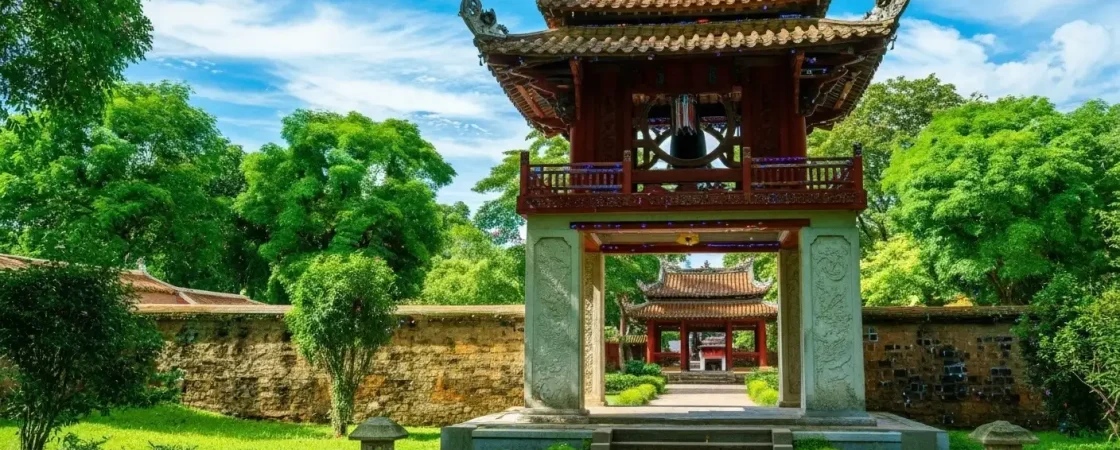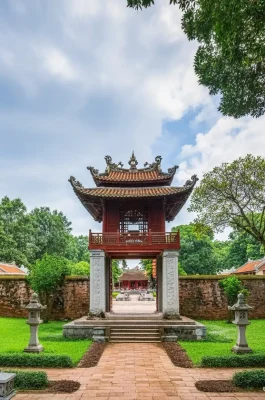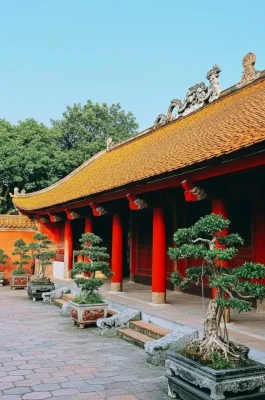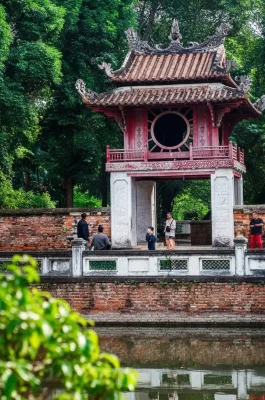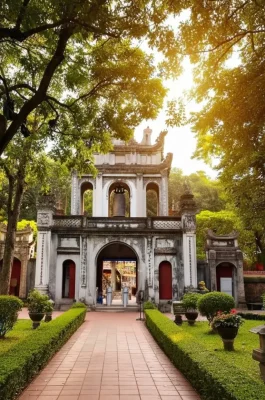The Temple of Literature, or Văn Miếu – Quốc Tử Giám, is one of Hanoi’s most important historical and cultural relics. Established almost a millennium ago, it honors Confucius and was the site of the Quốc Tử Giám, Vietnam’s first national university. It is a peaceful, beautiful example of traditional Vietnamese architecture and a testament to the nation’s profound respect for learning.
I. History & Cultural Significance
Founding and Dedication (1070): The temple was founded in 1070 by Emperor Lý Thánh Tông to worship the Chinese philosopher Confucius, sages, and scholars.
First National University (1076): Just six years later, Emperor Lý Nhân Tông established the Imperial Academy (Quốc Tử Giám) within the temple grounds. This was Vietnam’s first national university, designed to educate the nation’s elite, including princes, nobles, and bureaucrats, for over 700 years.
Symbol of Education: Today, the site remains a strong symbol of academic excellence. Vietnamese students often visit the temple before major exams to pray for good luck, and it is featured prominently on the back of the 100,000 Vietnamese Đồng banknote.
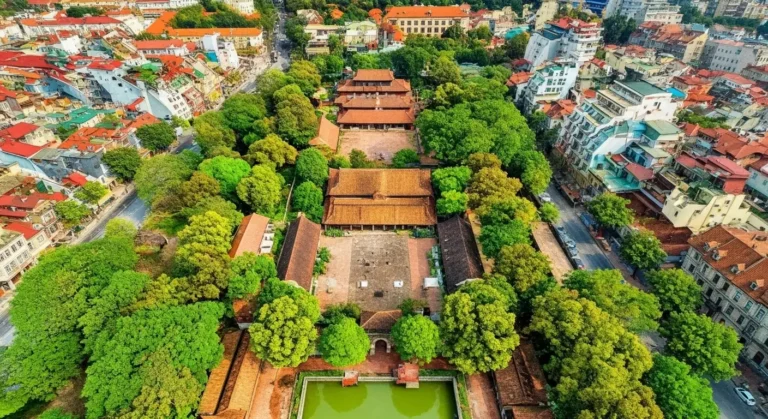
II. Architecture & Key Attractions (The Five Courtyards)
The complex is laid out in five sequential courtyards, symbolizing a scholar’s path to enlightenment:
First Courtyard (Văn Miếu Môn): Entered through the Great Gate, this area is a tranquil garden with ancient trees, offering a peaceful transition from the busy city.
Second Courtyard (Khuê Văn Các): Home to the iconic Pavilion of the Constellation of Literature (Khuê Văn Các), a beautiful two-tiered wooden structure that has become a symbol of Hanoi.
Third Courtyard (Thien Quang Well & Stelae of Doctors): This courtyard features the Well of Heavenly Clarity (Thiên Quang Tỉnh). Flanking the well are the most valuable relics: 82 Stone Stelae of Doctors. Each stele rests on a stone tortoise and is inscribed with the names and hometowns of those who achieved the highest academic honors in the royal examinations between 1484 and 1780. These stelae are inscribed on UNESCO’s Memory of the World Register.
Fourth Courtyard (Gate of Great Success): This section houses the sanctuary and main worship hall, dedicated to Confucius and his four principal disciples.
Fifth Courtyard (Imperial Academy): This reconstructed area includes classrooms and a large hall that honors the kings who contributed to the academy’s founding and growth.
III. Practical Information
| Detail | Information |
|---|---|
| Address | 58 Quốc Tử Giám Street, Đống Đa District, Hanoi. |
| Opening Hours (Daytime) | Generally 8:00 AM – 5:00 PM daily. (Some sources say 7:30 AM – 5:30 PM in summer.) |
| Entrance Fee (Daytime) | Adults: VND 70,000 (Note: Some sources still list VND 30,000 to VND 50,000, but VND 70,000 is widely current for general admission). |
| Discounts | Students (with valid ID) are typically VND 35,000. Children under 15 are usually free. |
| Night Tour | A special 3D Mapping Night Tour is often available on certain evenings (check schedules). Ticket prices are significantly higher (approx. VND 199,000). |
| Getting There | Located about 2 km from Hoàn Kiếm Lake/Old Quarter. Easily reachable by taxi, Grab, or public bus. |
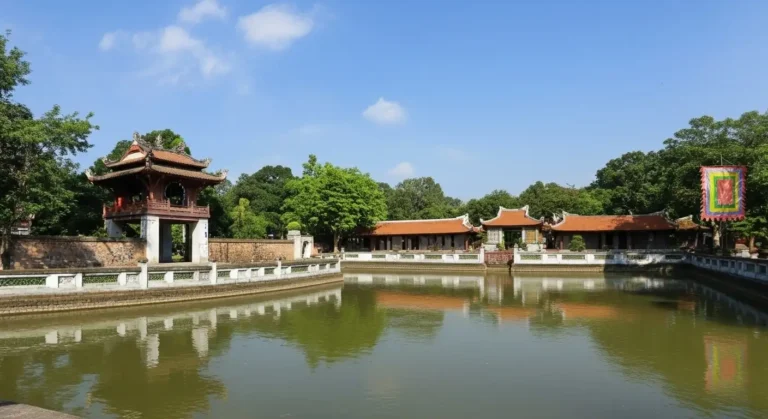
IV. Travel Tips & Cultural Notes
Dress Code: As a place of worship and high cultural significance, visitors should wear respectful attire. Avoid shorts, tank tops, and overly revealing clothing.
Etiquette: Maintain silence and a respectful attitude, especially in the worship halls. It is traditional to remove your hat when entering the main sanctuary.
Stelae Rule: Do not touch or rub the heads of the stone tortoises supporting the stelae. It is considered disrespectful to the historical relics and the honored scholars.
Payment: Ticket counters often only accept cash (VND), so be prepared before arriving.
Best Time to Visit: Go early in the morning on a weekday to avoid the largest crowds, particularly during the tourist season or before major Vietnamese exams.
